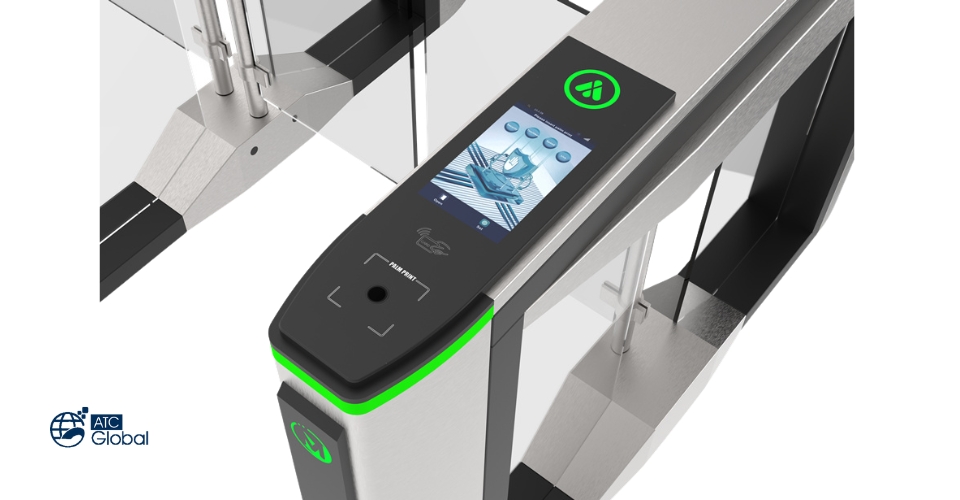Everything You Should Know About Biometric Turnstile Leave a comment
The biometric turnstiles which are an offshoot of the access control and security systems are at the top of the technological advancements in security systems technology. The advanced tools are ideal for everything from stadium turnstiles to bank security due to their ability to monitor and grant access using biometric technology. This will be done in the context of a detailed article on biometric turnstile, where we will examine their large spectrum of features, applications, benefits as well as their considerations.
What are Biometric Turnstiles?
Biometric turnstiles are the access control systems that apply biometric authentication procedures, whether it is fingerprint, facial recognition, or iris scanning, to confirm the identities of the people desiring entry.
These counter devices will be commonly used at the entrances leading into facilities, buildings, stadiums, transportation hubs or any place which has a high traffic movement because it will be used to control access and security purposes.
Finest Function of Biometric Turnstile
1. Biometric Authentication: Biometric turnstiles are designed based on the biometric data of people such as fingerprints, face or eye prints in order to accurately identify individuals before allowing them to go through.
2. Integration with Access Control Systems: These turnstiles are smooth in the process of integration into existing controlling systems which gives administrators the possibility to manage access permissions, register entry logs, and print reports.
3. Multiple Authentication Methods: People can use several biometric methods to authenticate their presence since many biometric turnstiles provide support for the multiple method which is convenient and flexible.
Applications of Biometric Turnstiles
1. Commercial Buildings and Offices: Human-made rods with fingerprint recognition are common in commercial areas and offices to monitor door passage to the compartments that need special authorization, such as work-restricted zones and security zones.
2. Transportation Hubs: Airports, train stations, bus terminals are now implementing biometric turnstile to effectively control passenger flows and augment security systems, e.g., at terminal gates and luggage handling stations.
3. Sports Arenas and Stadiums: Sports facilities develop biometric turning machines to control the entry to the seating zone, VIP part and the evicted sector to avoid the entrance of only authorized people.
Benefits of Biometric Turnstile
1. Enhanced Security: Biometrics makes the authentication process more secure as it is based on the unique physical traits of individuals, making it difficult for an unauthorized person to gain access to the system. Hence, biometrics is known to be comparatively more secure authentication means as it accurately verifies the identity of individuals, eliminating the possibility of new security breaches and unauthorized access.
2. Improved Efficiency: Biometric turnstile enable faster and more efficient identity authentication, enriching visitors’ experience and facilitating the access control procedure.
3. Convenience for Users: The utilization of biometric authentication technologies described through fingerprint scanning or facial recognition which ease users access to the buildings eliminating the need for physical keys and access cards as well as PINs.
Implementation factors of biometric turnstiles
1. Privacy Concerns: Contemplate whether or not privacy issues exist in using biometric data as they will have to be stored safely, so it’s important to establish security only measures with relevant regulations.
2. Reliability and Accuracy: Accuracy and reliability are pivotal requirements biometric-based authentication systems should meet to avoid false positives or false negatives that could affect the user experience.
3. Scalability and Integration: For utilization of biometric turnstiles, an emphasis on their scalability and the possibility of their integration with existing infrastructure so that the system is able to grow with future needs and smoothly adopt other security systems is suggested.
Biometric turnstile represent a significant advancement in access control technology, offering enhanced security, efficiency, and convenience in various settings. By leveraging biometric authentication methods, these turnstiles provide robust security measures while streamlining the entry process for users. However, it’s essential to carefully consider factors such as privacy concerns, reliability, and scalability when implementing biometric turnstiles in your facility. With proper planning and implementation, biometric turnstiles can revolutionize access control and contribute to a safer and more secure environment.

